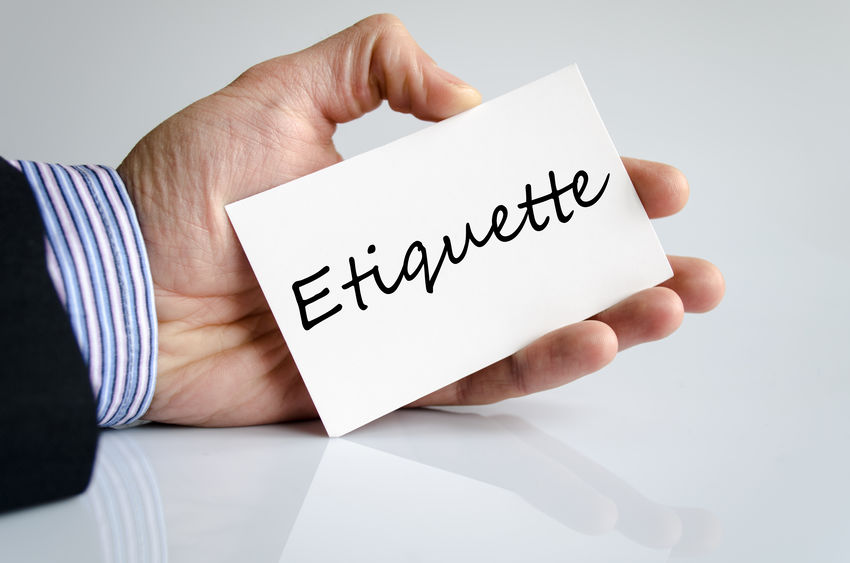 |
| The young bride... “Her hair was long and thick and braided full of little jingling coins. In ignorance of etiquette, I forgot to look at her feet, when she took the initiative and stuck out one, and then the other, to show that she had velvet slippers worked with gold thread and pearls. Then she showed her solitaire earrings.” |
How They Wed in Armenia – The Bride’s Dowery $100,000 – Bride and Groom Stood One Hour With Foreheads Touching, While Four Priests Performed the Rites
While the Armenians who live in European Turkey, and above all in Constantinople, have adopted foreign dress and modes of living, their religious observances have never undergone any change, and probably never will. Their weddings, their baptisms, and their funerals, as well as their church services, are all to-day exactly the same as when the Armenian Catholic church was founded in the third century by the Apostle Andrew. Those ancient customs fit in to-day with modern ideas very oddly, and for a person of the end of the nineteenth century to find himself alone at one of these ceremonies is to feel as if he were dreaming of times long past. The writer of this was invited to an Armenian wedding in Constantinople not so very long ago.
The bridegroom was a clerk and was rather taller than is usual for an Armenian to be as they are generally rather under than over the medium height. He was well built and had dark eyes and curling hair and a good fresh color, and in fact was quite a good looking young fellow. His name was Haskas. He, like all the Greeks and Armenians, as well as the majority of Europeans was quite willing to accept a fortune with his bride. In fact, I suspect that the prospective fortune was the prime motive of this young man. A young man of those countries has but few chances of making money for himself, and custom makes it appear quite proper for him to secure a fortune, more or less great, with his bride. Parents begin to lay aside their daughter's dowery from the time a girl is born, and according to the family and social providence of the young man and the demands of his friends. He is allowed no social intercourse with the unmarried ladies of any family, and therefore his affections cannot be said to be engaged.
When an Armenian family has a young daughter to marry, they look about until they find some young man who suits their ideas and then a messenger is sent to this young man's nearest relatives, telling of the admirable qualities of the girl and naming the sum of her dower. This is promptly refused if the young man's family thinks it is insufficient. The young man's parents want all they can get and they haggle and bid back and forth, until finally thinking they can do no better, they accept. The preliminaries are arranged either by the professional match makers or the relatives of bride and groom. The young man then makes a formal demand for the hand of the young lady through the nearest friend, the groom's mother, if she is living. The match-makers are old women, and they are paid by one family or the other. Often, two sets of matchmakers are employed, and they arrange everything, making the proposal and bearing the shy acceptance.
In the case of the wedding of which I write, an old woman from the bride's family had gone down to the young man's office and made her proposal there. The offer was accepted on condition that the dowry proved to be all that she said, viz. 30.000 perkits liras, or nearly 8100,000. The bride's family was a very wealthy one and she was was the only daughter. She had seen Haskas in some way and that shortened the preliminaries somewhat as a direct bid could be made. The girl was young and pretty and Haskas was considered very fortunate. The bride, in addition to the money dowry, received the gift of two houses, one in Prinkipo and one in Pera, but those were settled upon her. The furuiture and clothes were all part of the dowery, and Haskas’ mother went to verify the inventory to see if anything was put down that was not there. Haskas’ mother thought he was letting himself go dirt cheap, but as the bride was an only child and the parents lived near Yerimbourgas, and already showed evidences of the insalubrity of that place, she finally consented to the match.
The day before the wedding the whole amount of the dowry in cash was paid over to Haskas, and from a clerk with a pitiful salary of three liras a week he became in one hour, a partner in the firm he had formerly worked for. Out of this money Haskas bought a diamond necklace and some other jewels for his bride and his own wedding clothes. The wedding was to be at the home of the bride. When I arrived at the house she was just dressed, and I was invited into the bedroom where she stood in her magnificence. She was completely covered from head to foot with a veil of long slips of tinsel like that with which we decorate our Christinas trees. You could see nothing through this but the bottom of her dress. The women lifted the veil to show her face.
The bride was not over fifteen or sixteen and was quite pretty so far as one could judge. Her cheeks were painted and her eyebrows penciled darkly, to meet in the centre and reach to her hair. The rest of her face was one dead white, made so by lead cosmetic. Her dress was white satin embroidered with silver and pearls. The clothes were clumsily made as are all oriental garments and completely disfigured whatever of grace she had. At a hint from my friends, I took up a fold of her dress to see that the pearls were genuine. Her hair was long and thick and braided full of little jingling coins. In ignorance of etiquette, I forgot to look at her feet, when she took the initiative and stuck out one, and then the other, to show that she had velvet slippers worked with gold thread and pearls. Then she showed her solitaire earrings.
After the inspection of the little bride we took seats on the divan and sipped black coffee served in egg shell cups standing in gold filagree holders. Sweet meats were handed around in glasses, with spoons. The sweetmeats are of violet rose and anise flavors, and are made very thick. There are glasses of water, and another with spoons and one empty glass. You are expected to take a spoon, dip it into whichever jelly you prefer, eat a spooufnl, and then put your soiled spoon into the empty glass. I succeeded in upsetting a glass of water and both glasses of spoons, which for some reason they appeared to consider a good omen. After this we were taken to see the trousseau. Many of the dresses were of rich and handsome stuffs. Then we went to see the supper table.
 |
| The bride and groom touched foreheads for an hour |
This was spread in a long and icy cold room. There were fowls, cakes, dried fruits, enormous quantities of bread and cheese, and three, immense boiled fish, besides black olives, and confectioners' cakes. Hot dishes were to be served later when the guests were seated. The whole party then went into the parlor to wait the arrival of the bridegroom and the priests, of whom there were to be four. The rest of the company were all assembled, and at nine, Haskas and his mother arrived. The bride was led in and seated on a stool, the tinsel covering her completely. Haskas’ mother looked like a veritable old witch, and she passed her time making invidious remarks and declaring that the amount of dowry they were giving such a noble, beautiful and well connected young man as Haskas was utterly ridiculous. Everybody but the bride talked, smoked and had a good time, and at eleven the priests had not come. The bride's father went to see what had become of them. He soon returned to say that they would be along in a short time. So coffee and more sweetmeats were served, and mastic was offered to the men to sharpen their appetites.
Finally, at one o'clock in the morning a boy came and spread a piece of carpet in the center of the floor and said the priests were coming. The guests did not mind the delay, but the poor little bride sitting on the stool under her glittering head-gear tottered with sleep two or three times. No one spoke to her or offered her a glass of water, nor did she speak to any one. It must have been a cruel penance. At half past one the priests arrived, preceded by several boys with censors chanting. The priests were dressed in magnificent robes stiff with gold embroidery and jewels. The head priest had a sort of mitre blazing with jewels. The first carpet was now covered with another having jewelled tassels. The chief priest took the center of this with the other three behind him.
The bride's father led her forward to the bridegroom and they both stepped before the priest, cushions of red velvet were then presented, on which were wreaths of artificial leaves. These were put on the heads of the young couple. The tinsel veil kept that of the bride steady, but Haskas’ did not fit and kept slipping around, to his great discomfort. The bride was short, Haskas tall, and they were obliged to stand one hour with their foreheads touching. The wreaths were changed from head to head three times. The ceremony appeared to resemble the Catholic form closely, but with much more symbolism. When it was over, the newly married pair arose and and the priests went to the supper room, and after they had eaten and departed, the rest went to supper.
The poor, weary bride was placed on the same stool and the bridegroom came forward with a richly trimmed cushion on which his presents were displayed, a watch with a long, heavy chain, a diamond brooch and necklace and a pair of filagree bracelets, over four inches wide, studded with rubies and a red silk purse filled with gold money. After the presentation of the jewels, Haskas awkwardly unfastened the tinsel veil, handed it to his mother and clasped the jewels on the bride, to whom he then offered his hand and led her to the supper room, followed by all the rest. Hot roast mutton and pilaf and several other very substantial dishes were served, and an abundance of wine. The bride never spoke nor did anyone appear to regard her as other than a lay figure, though she ate a little.
It was daylight before they had finished eating for every one did full justice to the feast. Then every one went home in the gray light of morning, after one last cup of coffee and a speech congratulatory. Every wedding is carried out in the same general manner allowing for difference in the station and circumstances of the families. The mother-in-law exists in Armenian, as well as in our comic papers. Haskas’ mother never left off belitling the supper, the dowry and the appearance of the bride, but no one appeared to feel hurt or vexed, so I imagine it must be customary. Weddings being so complex, one is usually enough to last a life-time aud divorces are almost unheard of. Olive Harper, 1895
Etiquette Enthusiast, Maura J Graber, is the Site Editor for the Etiquipediag Etiquette Encyclopedia


















